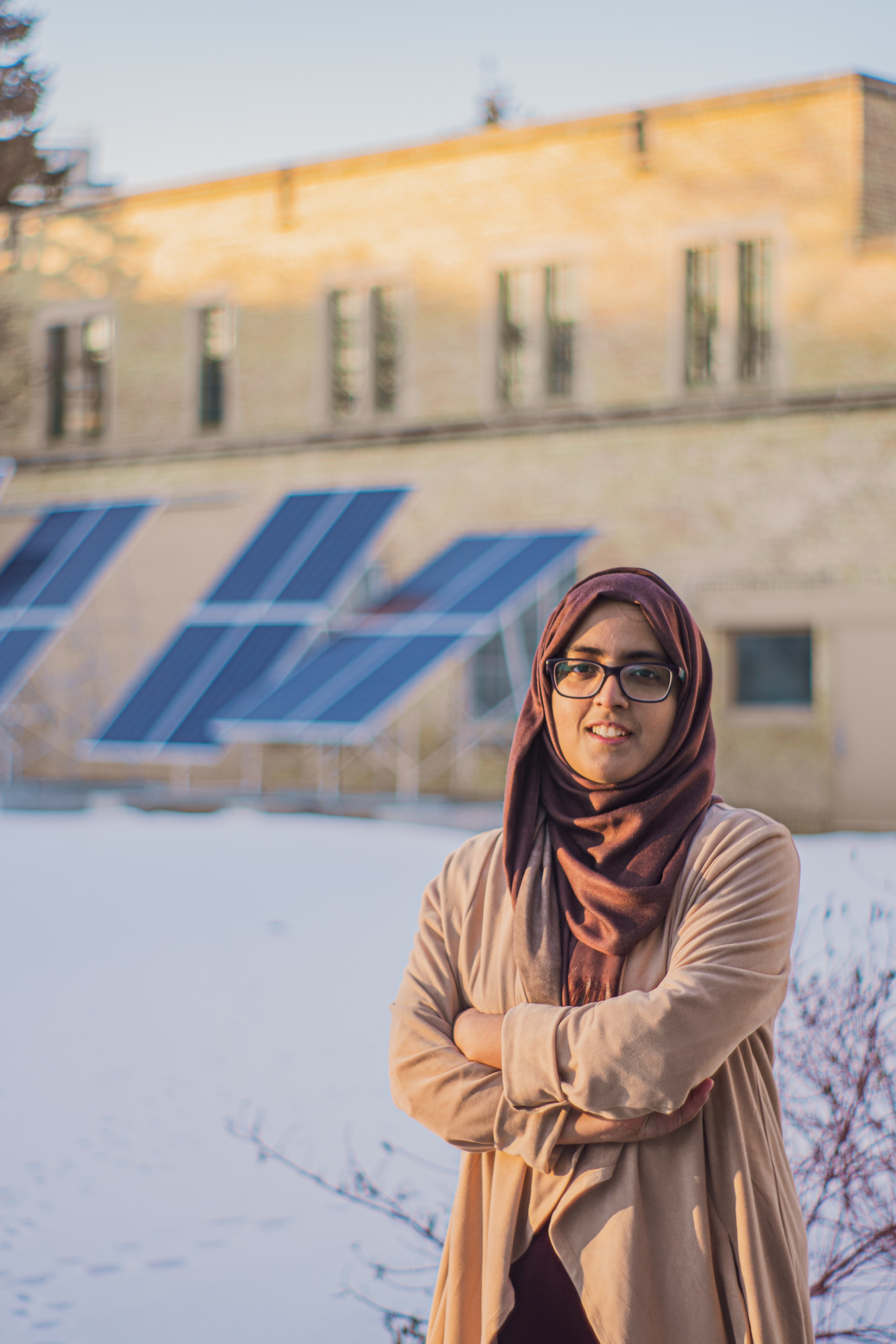
Play in the Grey Area
Samia Sami recounts her experiences as an undergraduate student researcher in the College of Engineering at the University of Saskatchewan in 2019
By Huzefa Muhammadzai and Merle Massie"I stepped out of my comfort zone into the unpredictable research world. You need a lot of grit and motivation to play in the grey area."
In the summer of 2019, Samia Sami completed a summer research internship working with Dr. C. Y. Chung at the SMARTGEN (Smart Grid and Energy Network) lab, which investigates smart grids, electric power systems and renewable energy. Dr. Chung is NSERC/SaskPower Senior Industrial Research Chair in Smart Grid Technologies, and the SaskPower Chair in Power Systems Engineering.
Note: this story was written but not published prior to the pandemic. Apologies to Samia for its late appearance!
Why do Summer Research?
“By the time I reached my third year of electrical engineering,” Samia said, diving right into her story, “I realized that most of the topics covered in electrical engineering power classes focused on traditional power systems.” But Samia wanted more of a challenge. “I stepped out of my comfort zone into the unpredictable research world.”
“Sometimes healthy risk-taking is all that you need to achieve your goals, find answers…and see yourself grow as a person.”
Samia studied ways to integrate renewable power generation resources (such as solar and wind) into the electrical grid, concentrating on how it might affect Canada’s remote, off-grid communities. She concentrated on microgrids and how to ensure their security in remote environments.
The research project built Samia’s overall understanding of power generation, and particularly how to “make wise decisions in the future” for her own choices.
What makes research different from coursework?
“There are no black and white solutions in research,” Samia said. It’s a stark contrast to classes and exams with right and wrong answers. In a summer research experience, a student needs “a lot of grit and motivation to play in the grey area.”
“The word research can be broken into ‘re’ and ‘search’ which suggests that research is not a straight journey,” said Samia. Instead, researchers go through a continuous cycle of steps that require motivation, curiosity, and commitment. A researcher must commit to a research goal, not just once but over and over again. Then, a conclusion is not the end, but the “beginning of a new research idea.”
Reaching out
Even when the research results were challenging, Samia found the confidence to ask questions, get help and request clarification. Looking back, Samia realized she should have reached out even more to the senior graduate students, postdoctoral fellows and professors. “By listening to their research experiences, I would have definitely gained more insights,” not only into her own work, but the research process in general.
Technical Mastery
There was a lot of learning to be done before Samia could start to build her own data and research, nodding to her month of dogged background work to understand the technical hardware and software, data mining and statistics she would need for her research work.
Mastering the technical side “played a critical role in expanding my knowledge and skillset,” Samia said, which helped her secure a professional engineering internship, where she could hit the ground running. “It was an eye-opening experience,” she said, to learn a sampling of the breadth of techniques and programs used in her research area.
Sharing the research
Samia’s supervisor, Professor Chung, encouraged her to participate in the annual summer USRA poster competition. “I really enjoyed the experience of sharing my research creatively in the form of the poster…it took me about eleven revisions of the original poster draft before my professor and I were satisfied.” It’s important, Dr. Chung told her, to learn how to present to a non-technical audience.
“I am now able to tailor my research findings to different audiences – from professional experts…to the public. I am also able to create various visual aids to represent my research more creatively.” Reworking your research into a poster pushes your creativity.
Winner of the People’s Choice Award at the summer poster social in August 2019, Samia was delighted to see that people were clearly attracted to her project on integrating renewable power generation in remote communities across northern Saskatchewan.
The poster competition also gave Samia insight into cross-disciplinary thinking. Standing next to another student presenting a poster from the Department of Mathematics, the two chatted over their research. “We realized that we could combine our projects into a megaproject,” where Samia’s work on microgrid security would be enhanced and clarified by the math student’s research on misclassification techniques. That exchange of ideas popped open new research paths and possibilities for both.
How to get involved in summer research
If you’re a student interested in a summer research experience, Samia says that landing such a position takes time. It’s up to the student to look around to find (or to create) those connections and opportunities. Check out bulletin boards, Career Link and department web pages. Look for a faculty member who is doing work that you’re interested in – then send an introductory email followed by an appointment or web meeting. You don’t need to have taken their class. You just need to start the conversation, send your resume, and be open to possibilities.
A summer research project, Samia says, is an invaluable experience that will give you an “ability to think outside of the box,” or as she says, play in the grey area, “which I believe is an essential yet difficult skill to master.”

